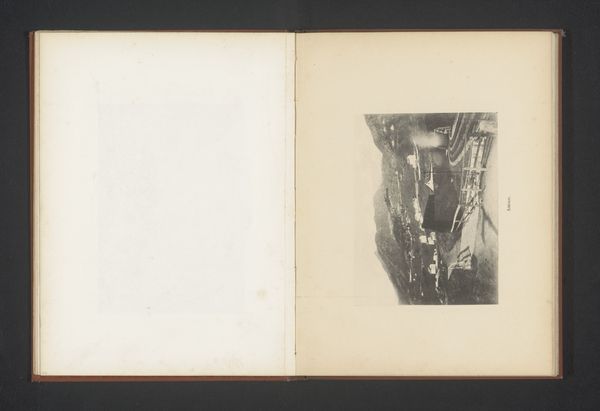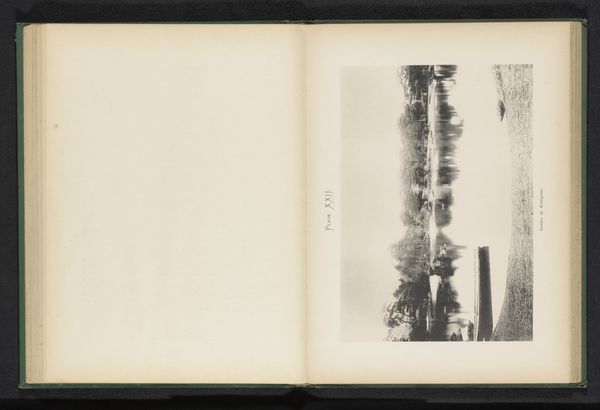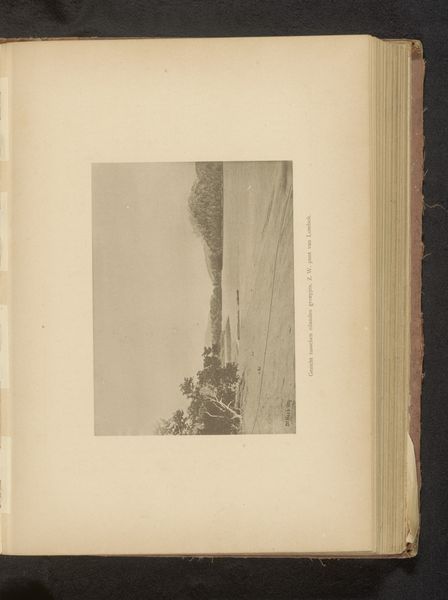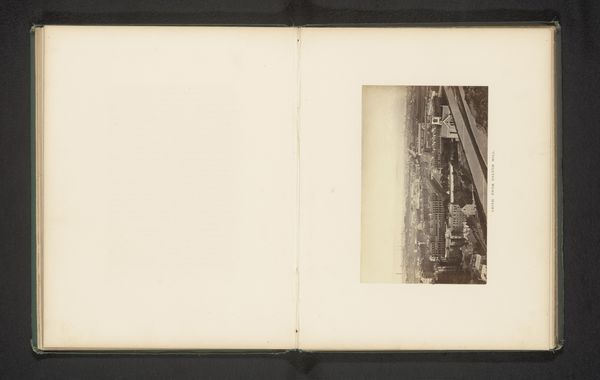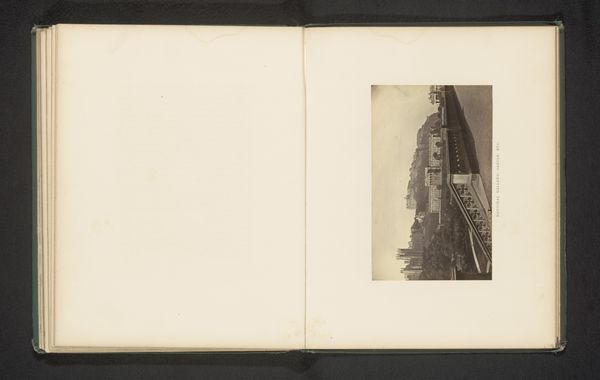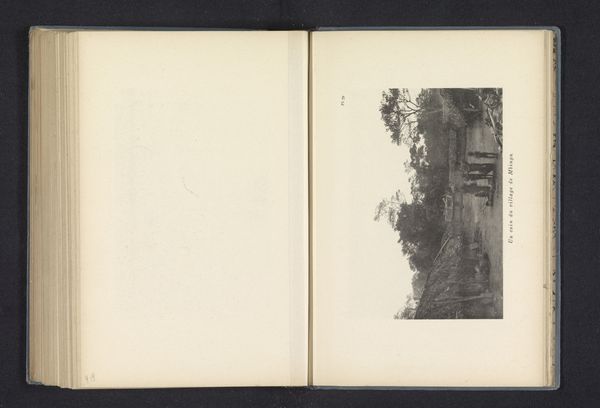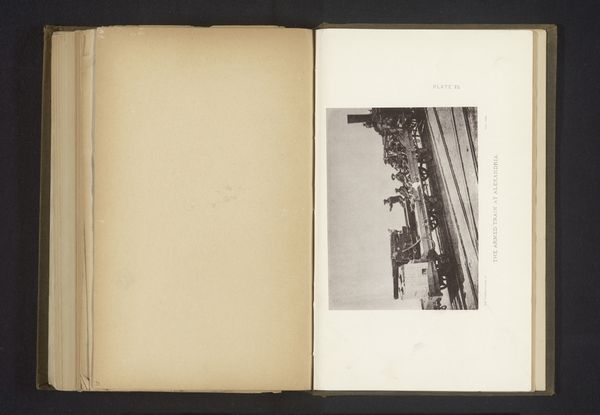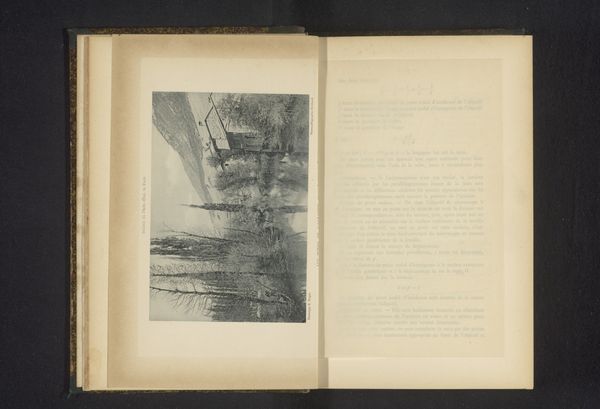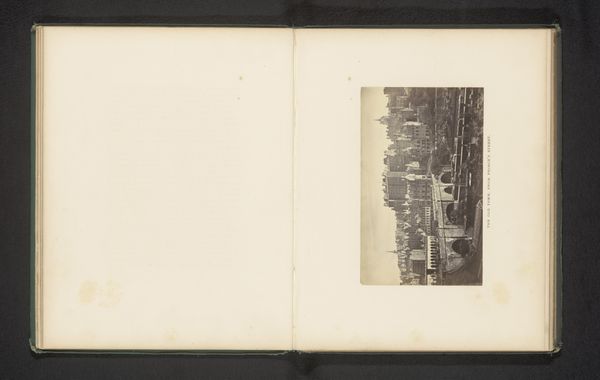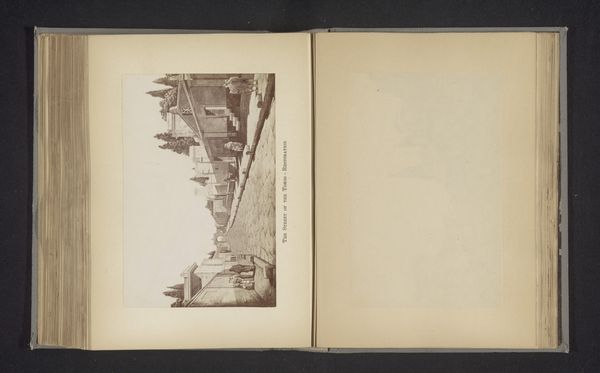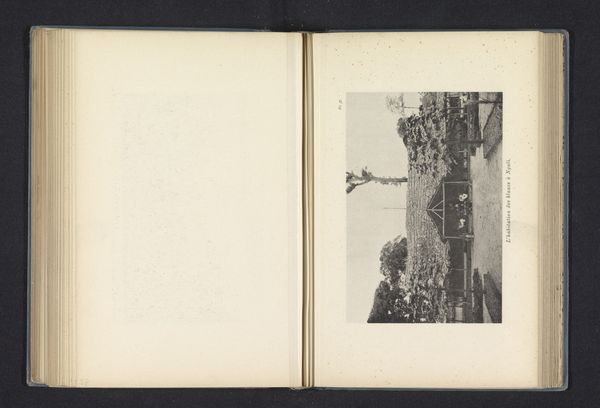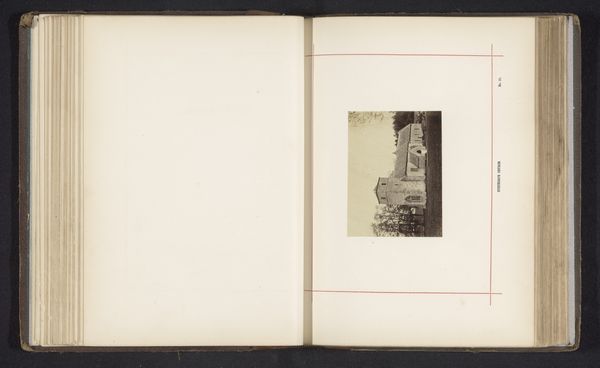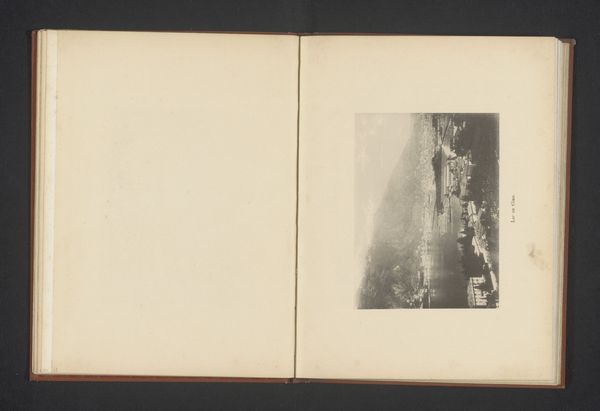
#
aged paper
#
homemade paper
#
paperlike
#
sketch book
#
hand drawn type
#
personal journal design
#
personal sketchbook
#
hand-drawn typeface
#
thick font
#
park
#
historical font
Dimensions: height 119 mm, width 174 mm
Copyright: Rijks Museum: Open Domain
Curator: This is a reproduction of Jules Royer’s “Gezicht op het kasteel van Compiègne, Frankrijk,” dating back to before 1895. Editor: The stark contrast between the pristine building and the hazy surroundings evokes a dreamlike quality. The sepia tones certainly enhance the old-world atmosphere, reminding me of a faded photograph found in a long-forgotten journal. Curator: The use of photographic reproductions like this became more prevalent in the late 19th century as a means of democratizing access to art and architecture. They also played a crucial role in shaping public perception of cultural heritage and promoting tourism. This image likely circulated within elite social circles. Editor: I'm immediately drawn to the strong diagonal composition created by the facade. It gives the building a sense of movement, and perhaps hints at the changing historical position of such architecture in this era. Castles, once symbols of absolute power, began to transform into museums and historical landmarks, their symbolic meaning also evolving. Curator: Precisely. Royer's choice to depict the Château de Compiègne at this particular angle emphasizes its grandeur but also suggests its integration into the surrounding park, indicating a shift from exclusive fortress to public monument. Note how these images became integral tools within the political discourse of that time, aiming to forge national identities and reinforce ideologies. Editor: The deliberate contrast of light and shadow adds an extra layer, almost creating a binary of history. The symbols represented by the château are bathed in light but tempered by its aging surroundings. It prompts a contemplation on how such enduring power might transition and what it signifies. Curator: This kind of image also tells a silent story about its audience. The ability to access such imagery was linked with social position, contributing to both a personal and a broader, social memory landscape. Editor: Indeed, it makes me consider that what endures isn't necessarily what is physically strongest, but what we choose to preserve and the stories we choose to pass down. Curator: Well, considering its historic role, perhaps such visual choices are a quiet appeal towards heritage tourism and cultural preservation in a quickly modernizing world. Editor: I agree completely, I feel now that I better understand the visual symbols behind such grand buildings.
Comments
No comments
Be the first to comment and join the conversation on the ultimate creative platform.
